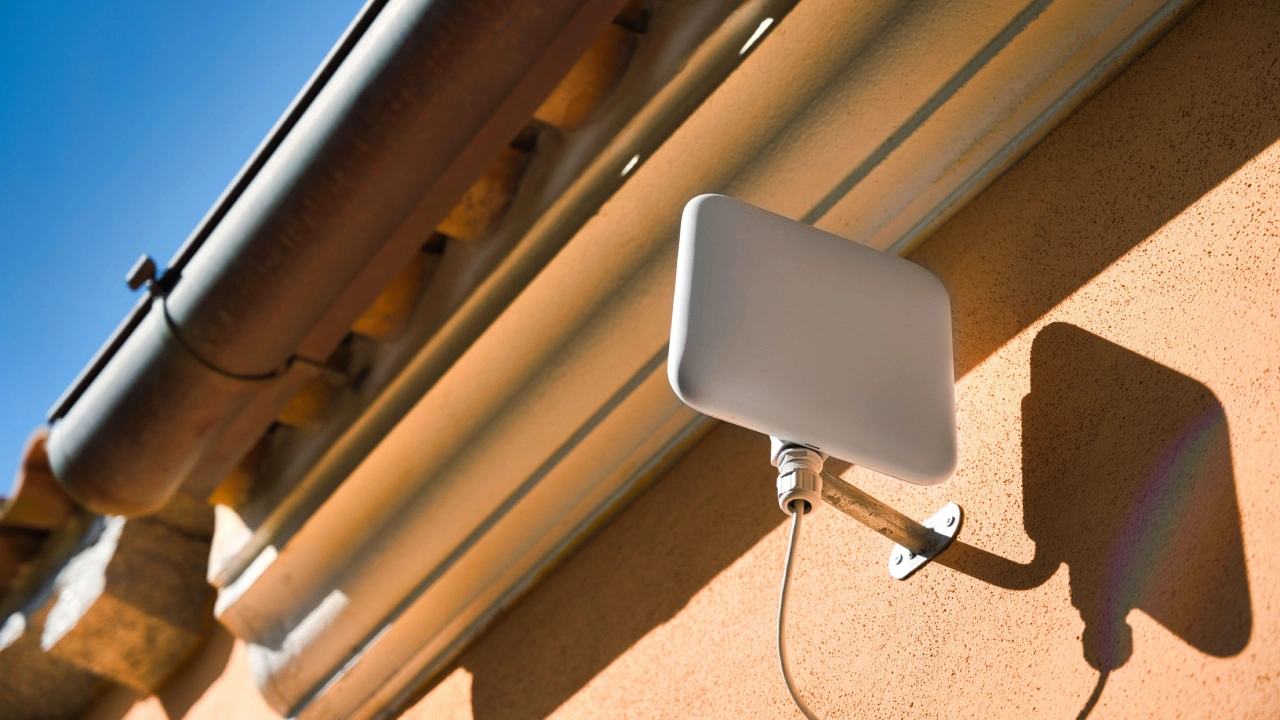How Fixed Wireless Access is transforming enterprise operations by enabling high-speed internet in any location
by Tiffany Wolf | September 17, 2024
According to the latest Ericsson’s Fixed Wireless Access Insights, in the next five years fixed wireless access (FWA) connections are projected to grow significantly, reaching 330 million, or 18% of all fixed broadband connections, by 2029. Over the same period, FWA data traffic is expected to grow to over 150 exabytes, which will represent nearly 30% of total mobile network data traffic. Not surprisingly, most providers in the world already offer fixed wireless access services: over 80% of service providers in North America, Europe, the Middle East and Africa, and more than half of providers in the Asia Pacific and Latin America regions.
For providers, fixed wireless access deployments offer a number of advantages over wired deployments, including faster time-to-market and the ability to leverage existing mobile infrastructure. The growing adoption of 5G and its superior performance also contribute to the surge of fixed wireless access, enabling speed and quality on par with fiber communication lines.
From the user’s perspective, fixed wireless access can be an efficient alternative to wired broadband connections, with the potential for high-speed internet connectivity in any location regardless of existing communication infrastructure. It can also serve as a backup for businesses that have wired broadband but need to be sure their devices remain connected in case their primary service is down.
Fixed Wireless Access vs. Traditional Wired Connectivity
There are three basic types of wired internet connectivity: digital subscriber line (DSL) that utilizes existing telephone lines to transmit data, connection over coaxial cables similar to the ones that cable TV works with, and fiber optic cables that transmit light signals to provide high-speed internet. However, all these connectivity options depend on traditional wired infrastructure, which is not available everywhere. They also may have other problems – for example, DSL performance deteriorates with distance from the central office, limiting its effectiveness in remote locations.
Compared to these communication lines, fixed wireless access offers flexibility in deployment and can deliver high-speed internet to areas where traditional wired infrastructure is challenging or costly to install. Besides, upgrading wireless infrastructure is way easier and quicker than wired network. With wireless networks, oftentimes the only thing needed is a software update or minor hardware adjustment, while wired infrastructure upgrades may require physically changing cables or adding new ones.
There is another option for wireless internet – satellite connectivity, but it generally has higher latency due to the long distance that signals must travel to and from the satellite. Beyond that, scaling can be more challenging and expensive, due to the cost of satellite dishes and other equipment. Monthly service fees can also be higher, particularly for high-speed or high-capacity plans.
However, probably the best example of fixed wireless access benefits is not its comparison to other types of broadband connections, but the use cases where it proves to be indispensable.

Real-World Applications of Fixed Wireless Access
Remote Areas
This is one of the most common use cases of fixed wireless access. For enterprises and residences in certain locations – suburban, rural or isolated – it’s hard to ensure high-speed connectivity. Network operators typically find it impractical to roll out wired broadband infrastructure in these areas, and even if they are ready to deploy it, maintenance is complicated and expensive. Fixed wireless access is a solution that enables enterprises and households in such areas to grow economically, while saving on the cost of operations.
Events and Temporary Setups
For enterprises that need to move between different locations, or have temporary objects such as concerts, trade shows, or sporting events where a temporary, high-capacity connection is needed, wired infrastructure is often not the best solution. Laying down cables that won’t be needed in a few days doesn’t seem to be cost-effective. Instead, enterprises can quickly implement fixed wireless access and unsubscribe when it’s time to move.
Construction Sites and Field Operations
Delivering connectivity to construction sites where temporary office spaces or on-site facilities require reliable internet for project management and communications is a challenging task. Even not in remote locations, construction sites typically have complex layouts that don’t support traditional wired network infrastructure. The same goes for industries with field operations like agriculture, mining, or energy, where fixed wireless access can be deployed for months or ongoing use to enable connectivity for effective communication, collaboration, and management.

Connectivity Requirements
While most FWA offerings may seem quite similar due to the nature of the service, there are several key requirements that are important and may become a differentiator when choosing a service provider.
Reliability
Fixed wireless access can function as an improved broadband connection, but wireless connectivity may sometimes be affected by factors such as weather, obstructions, and interference. Usually, there are several mobile operators in any region, which means that the service can still work even when one of the networks is down or the connection is unstable. Basically, this is the reason why cellular connectivity is often used as a backup to the fixed infrastructure. However, it is recommended to make sure your connectivity solution can use multiple carriers’ networks and offers this type of redundancy.
Data Usage Limitations
It’s an unspoken understanding that there is no such thing as truly unlimited data in fixed wireless access offerings. Many carriers offer various kinds of ‘unlimited plans’, but when using large amounts of data, it’s not uncommon for their users to experience throttling and face red tape and fine print.
To make sure your connected devices don’t get throttled when they reach a certain amount of data usage, it is extremely important to choose a provider that does not restrict data at any level.
Scalability
Fixed wireless access systems typically have advantages over other means of connectivity when it comes to scalability. They rely on base stations or access points that are easier and quicker to deploy compared to laying cables or installing satellite dishes. Adding new users or expanding coverage often implies just setting up additional base stations or even upgrading existing ones rather than building extensive new infrastructure.
That said, provider’s scaling capabilities critically depend on a set of geographically specific infrastructure. Furthermore, it is important to make sure that scaling doesn’t bring other issues, such as latency or compliance with regulations. That’s why core network is a major criterion when choosing a connectivity solution.
Security
Fixed wireless access systems offer certain security advantages over traditional wired connections. First of all, it reduces physical vulnerabilities, since there is no wired infrastructure to protect. Moreover, FWA supports robust encryption standards, especially with technologies like 5G that use advanced encryption protocols that protect data in transit. Fixed wireless access systems can be designed to segment different parts of the network, isolating sensitive data and systems from less critical parts to improve security. Integration with VPNs and other secure tunnelling technologies is straightforward with FWA.
Yet it is important to note that no system is entirely immune to security risks, so when choosing a connectivity solution, it is important to ensure it implements best practices and provides additional layers of security for data transmission.

Webbing’s Solution
Webbing offers a connectivity solution that ensures global access to reliable and high-quality internet, with low latency and the best of class coverage.
As a global MVNO, Webbing’s network of 600+ mobile operators guarantees worldwide coverage. Webbing provides services to roam on several carriers’ network in every country, solving the problem of weak spots that any mobile network may have and ensuring full coverage and continuous connectivity even at remote locations.
Webbing’s distributed full-core network with local breakouts, multiple network solution, and data server redundancy can provide connectivity stability and low latency. As such, it is well suited to support all types of use cases, including mission-critical and high-data consumption.
Our solution is resilient and redundant with a robust and structured framework. It guarantees failover connectivity to the best wireless carrier in the area with the capability of using multiple mobile carrier profiles, easily changing carriers at any time with zero integration, and an option to fall back from a failing profile to a different profile in case of unstable signal or coverage issues. It also offers connectivity choices to suit your data transmission needs, remote management and analytics of devices, private networks and security options (VPN, APN), scalability, and most importantly, it is secure by design: data is encrypted, and users are securely identified.
A flexible approach to data packages allows us to tailor our connectivity offering for every customer based on the type of connected devices and their data consumption needs as well as the locations where the devices are used, aiming at overall optimization of the total cost of operations for the client. We also do not throttle or restrict data at any level but enable the capability for customers to throttle as they see applicable with our on-demand usage control policies and further features to control usage with content filtering options.
Reach out to learn more about our connectivity solutions.




